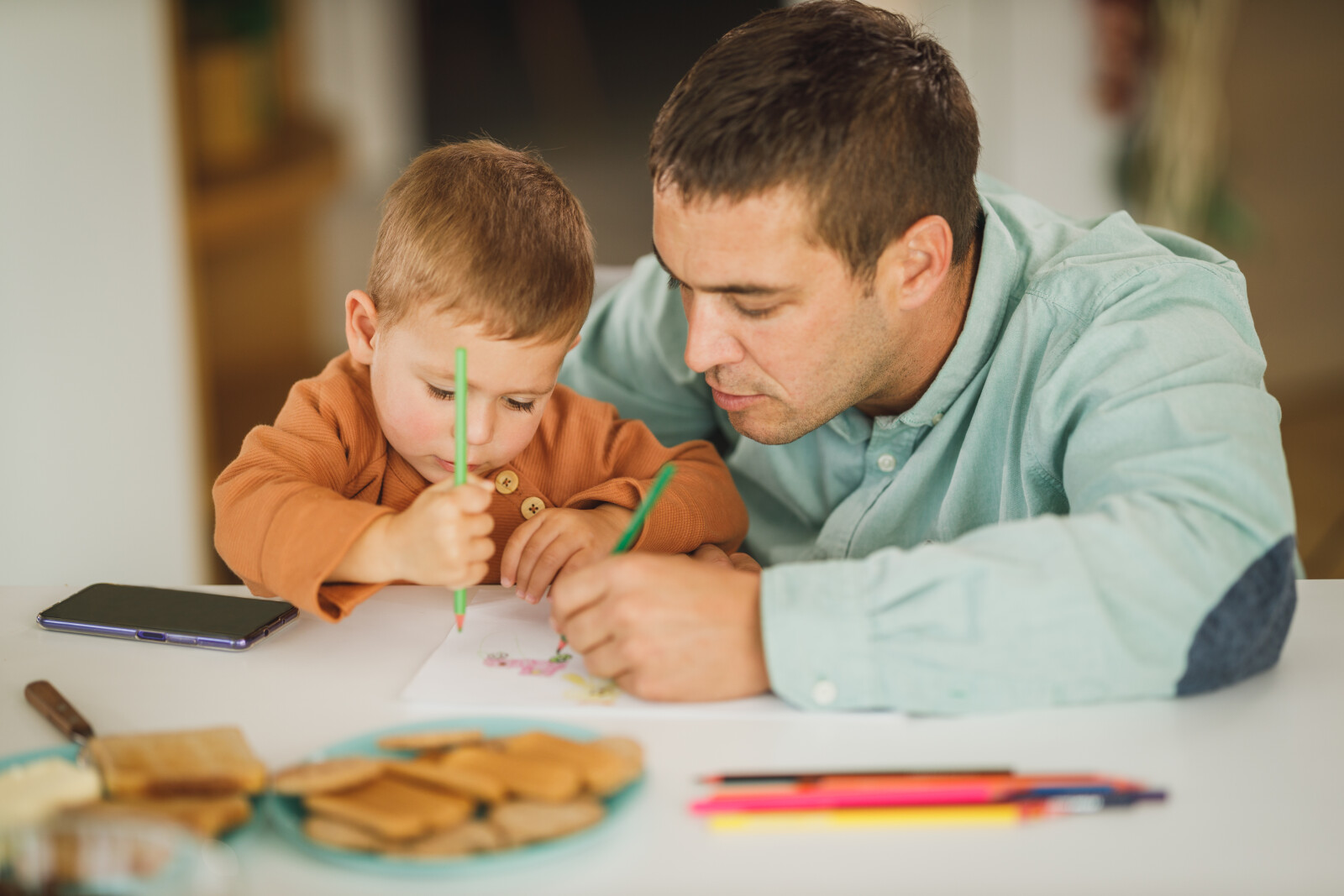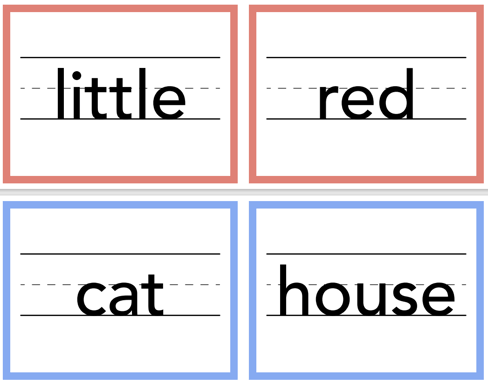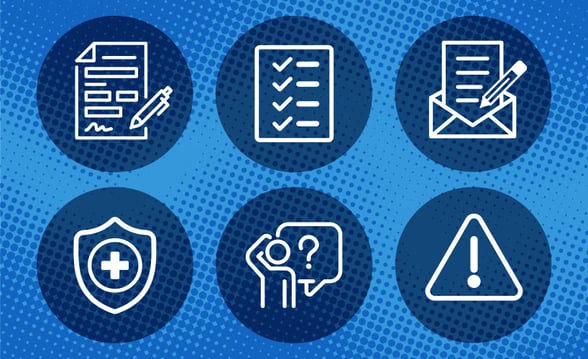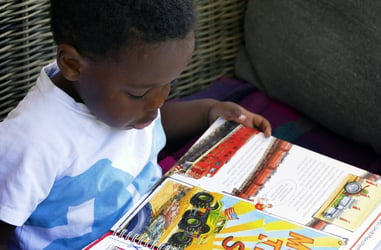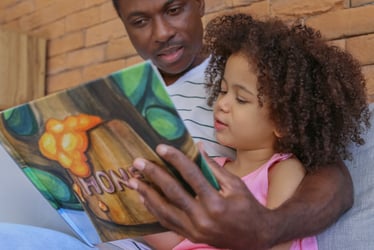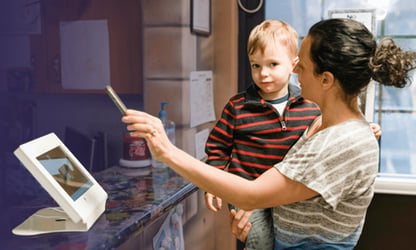Engaging Pre-Writing Activities for Preschoolers to Spark Learning
As an educator, you play a crucial role in nurturing emerging writing skills. By providing activities for preschoolers to help letter recognition and literacy, you set kids up for long-term academic success. From interactive games that build phonological awareness to shared writing experiences that model proper techniques, discover a wealth of ideas to support preschoolers at every stage of their writing journey. It's never too early to start preschoolers on the way to reading and writing, and working on pre-writing skills is the first step!
Table of Contents
How Do Pre-Writing Activities Help Kids Learn?
How Do You Teach a Preschooler to Write?
What Are Fun and Engaging Writing Activities for Preschoolers?
- Activities for Understanding the Purpose of Writing
- Activities for Developing Fine Motor Skills
- Letter and Word Imitation Activities
- Activities to Better Understand the Connection Between Letters and Sounds
- Activities for Introducing Original Writing
- Advanced Writing Activities
- Activities to Encourage Writing
How Do Pre-Writing Activities Help Kids Learn?
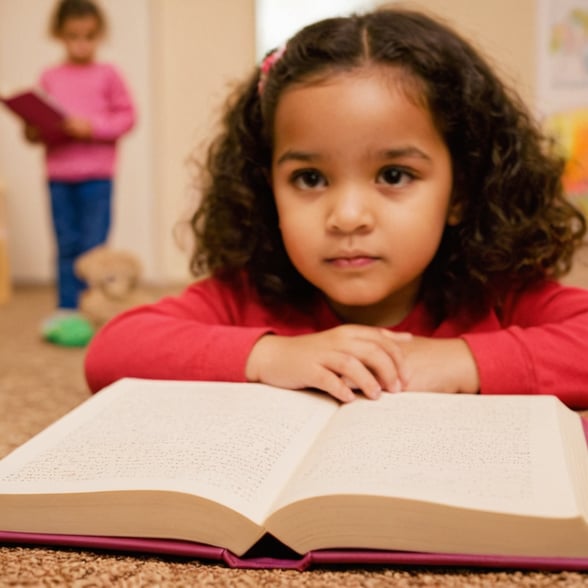
Early writing activities play a crucial role in the overall development of preschoolers. These activities not only foster literacy skills but also contribute to various aspects of a child's growth. Here are some specific ways early writing activities help preschoolers learn:
- Enhance fine motor skills: Writing activities help develop hand-eye coordination, hand strength and dexterity in the small muscles of the hands (Şenol, 2021).
- Promote cognitive development: Engaging in writing tasks stimulates critical thinking, problem-solving and creativity in young children (NAEYC, 2017).
- Develop language and communication skills: Writing activities encourage preschoolers to express their thoughts and ideas, expanding their vocabulary and narrative abilities (Frontiers, 2023).
- Foster phonological awareness: Early writing experiences help children understand the connection between sounds and letters, a crucial foundation for reading (Şenol, 2021).
- Encourage self-expression and confidence: Providing opportunities for writing allows preschoolers to share their unique perspectives and builds their self-esteem (NAEYC, 2017).
How Do You Teach a Preschooler to Write?
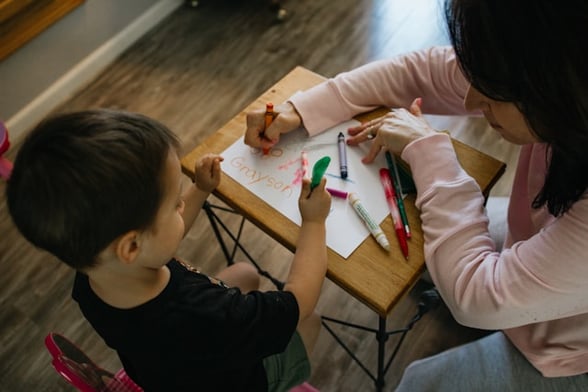
Teaching a preschooler to write is a gradual process that involves nurturing their interest, providing appropriate materials and offering guidance and support. The following eight steps outline a comprehensive approach to helping preschoolers develop their writing skills, drawing from evidence-based practices and research findings.
1. Understanding the Purpose of Learning to Write
The first step in teaching preschoolers to write is familiarizing them with various writing materials and demonstrating the purpose of writing. Allow children to observe adults and peers as they write, explaining that writing is a form of communication (NAEYC, 2017). Provide a variety of writing tools, such as crayons, markers and paper and encourage exploration and experimentation.
2. Developing Fine Motor Skills
Before preschoolers can form letters and words, they need to develop the necessary fine motor skills. Engage children in activities that use their fingers and strengthen their hand muscles, such as playing with clay or play dough, stringing beads or using scissors (Şenol, 2021). These activities help improve hand-eye coordination and dexterity, preparing them for the physical skills children need to write.
3. Letter and Word Imitation
Introduce preschoolers to the alphabet through playful activities, such as singing songs, reading alphabet books or using letter manipulatives (The Reading Teacher, 2023). Encourage children to copy words from their environment, such as their names or labels on objects. This imitation stage helps them recognize the shapes and forms of letters and words.
4. Understanding the Connection Between Letters and Sounds
Engage preschoolers in games and activities that highlight the connection between letters and the sounds they represent (Şenol, 2021). Guide children in forming simple words, emphasizing the sound-letter relationship. This phonological awareness is a crucial foundation for reading and writing development (GSU News, 2023).
5. Creating Original Writing
As preschoolers gain more confidence in their writing abilities, support their attempts at writing words the way they sound, known as invented spelling (NAEYC, 2017). Provide opportunities for children to share their writing, such as dictating stories or creating signs for their play areas. This enhances their understanding of writing's purpose and encourages them to express their ideas.
6. Introduction to Advanced Writing
Gradually introduce preschoolers to correct spelling and the structure of written language. Demonstrate how to write simple sentences and engage in activities where children practice writing with conventional spelling, with support and guidance (Frontiers, 2023). Shared writing experiences, where the teacher and child collaborate on a piece of writing, can be particularly effective.
7. Encourage Writing Through Positive Feedback, Evaluate and Adapt Teaching
When evaluating writing efforts, offer praise and positive feedback, celebrating their progress and accomplishments. Provide gentle, constructive feedback to guide their writing development. For example, if a child writes "kat" instead of "cat," acknowledge their attempt and say, "I see you wrote 'kat.' That's a great try! The word 'cat' starts with the letter 'c.'" This approach reinforces their efforts while providing guidance for improvement (The Reading Teacher, 2023).
Regularly assess each child's writing development to tailor support and challenges to their individual needs. Continuously adapt teaching strategies based on their progress and interests, ensuring a personalized and engaging learning experience (Puranik & Lonigan, 2014).
What Are Fun and Engaging Writing Activities for Preschoolers?
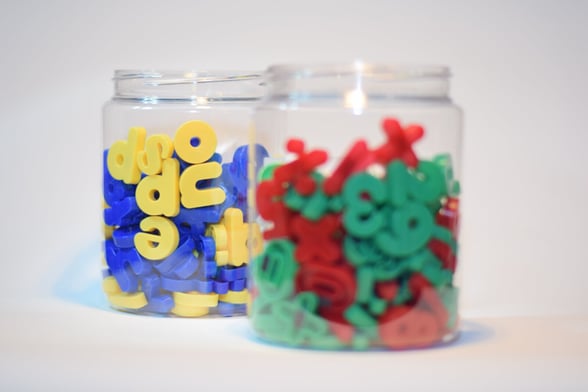
There are innumerable fun pre-writing activities for preschoolers, but what ones are the best? The answer lies specifically in what lesson you're teaching and what your objective is. To help you try these fun and engaging activities with your particular lesson, we've sorted each activity with the specific stage of writing development they help children develop. Take a look at our list and use these pre-writing activities to make writing fun.
Activities to Help Preschoolers Understand the Purpose of Writing
1. Post Office Play
Overview: Post Office Play is an engaging role-playing activity that demonstrates the purpose of writing as a form of communication. Children write and send letters to their peers, learning that writing conveys messages and ideas to others.
Materials:
- Paper
- Envelopes
- Crayons or markers
- Stickers (optional)
- Play mailbox or cardboard box
Setup:
- Create a designated post office area in the classroom with a play mailbox or decorated cardboard box.
- Provide writing materials such as paper, envelopes, crayons and markers.
- Optional: Create play stamps or stickers for children to decorate their envelopes.
Instructions:
- Introduce the concept of a post office and explain how people write letters to communicate with others.
- Encourage children to write a letter to a friend or family member. They can draw letters, pictures, scribble or attempt to write words.
- Assist children in folding their letters and placing them in envelopes.
- Have children address the envelopes to their intended recipients and decorate them with stamps or stickers.
- Collect the letters in the play mailbox and distribute them to the recipients.
- Encourage recipients to read the letters aloud or share them with the group, emphasizing the idea that writing is used to share messages and ideas.
2.What's the Need for Writing? Explained by Kids Academy
Explaining a concept as complex as writing to a young kid can be challenging. Thankfully, there are a number of engaging videos that quickly do the job, particularly Kids Academy's animation. It is great for kids as it quickly explains the connection between words, letters and objects to little ones.
Developing Fine Motor Skills Activities
3. Free Alphabet Dot Maker Worksheets by Free4Classrooms
By providing dot markers or bingo daubers, teachers can demonstrate proper grasp and pressure control, encouraging students to carefully fill in each letter outline. This activity also helps to promote hand-eye coordination and muscle development and coordination. To reinforce letter awareness, teachers should review the letters' shapes and sounds before the activity, encourage students to say each letter's name and sound while working and engage in discussions about words that begin with each letter sound. Displaying the completed worksheets in the classroom serves as a reference for ongoing letter review.
4. Focusing on Each Letter by The Measured Mom
The Measured Mom offers a playful letter-of-the-week series for young learners first learning to read. These activities focus on one letter at a time and commonly involve fine motor skills in each letter recognition activity. By exposing them to the concept of each letter, children start learning letters, preparing them to craft words later on.
5. Chicka Chicka Boom Boom Alphabet Worksheets by Preschool Play & Learn
Expose children to writing with the children's book classic, Chicka Chicka Boom Boom. This alphabet activity is a cleverly designed, engaging printable that simultaneously develops fine motor skills and reinforces letter recognition in young children. Peeling and placing the dot stickers onto the corresponding uppercase letters on the coconut tree worksheet refines pincer grasp, hand-eye coordination and finger dexterity — all essential for future writing skills. At the same time, visually identifying and matching sticker letters to the worksheet, combined with saying letter names aloud, provides multisensory practice that effectively builds alphabet knowledge. The colorful, playful theme inspired by the beloved children's book makes this fun writing activity especially appealing and motivating for preschoolers, ensuring they'll eagerly participate while gaining valuable pre-literacy skills. Here is a link to the activity printable they made. And for more detailed instructions, check out their steps here.
Letter and Word Imitation Activities
6. Letter and Sticker Match by Alma Modern Kids
This fun activity helps children learn letters and is really easy to do. All you need is dot stickers, a piece of construction paper and a marker. It is particularly effective because it teaches kids to match the letters on the dots with the letters written onto a piece of paper. Manipulating the materials is an effective way for active learning and will prepare them for writing.
7. Name Tracing and Copying
Overview: Name tracing and copying is a simple yet effective activity that helps preschoolers recognize and reproduce the simple shapes and forms of letters in their own names. By focusing on a personally meaningful word, children develop a foundation for further letter and word imitation. As they learn how to form letters, children are also learning how to write.
Materials:
- Paper
- Crayons, markers or pencils
- Name cards or strips
Setup:
- Prepare name cards or strips for each child, with their name written in large, clear letters.
- Provide each child with a sheet of paper and a writing utensil.
Instructions:
- Give each child their name card or strip and have them identify the letters in their name.
- Demonstrate how to trace the letters with a finger, emphasizing the direction and formation of each letter.
- Encourage children to trace over their name with a writing utensil, following the same direction and formation.
- Once they have traced their name, have them attempt to copy it below the tracing, referring to the name card as needed.
- Provide praise and encouragement for their efforts, emphasizing the importance of practice in learning to write.
8. Cups and Paper
This activity is easy to set up. All you need is a few paper cups, sheets of construction paper and a marker. In the activity, children match the paper to the letter on the cups. This activity is great because manipulating letters is one of the best ways for kids to connect meaning to letters, an essential pre-writing skill.
Understanding the Connection Between Letters and Sounds
9. Playdough Mats by Preschool Play & Learn
These alphabet playdough mats offer a fun, hands-on way for kids to practice making letters and words through imitation — key skills for early writing. As children shape the dough into uppercase letters and copy the printed vocabulary words, they gain valuable experience with letter formation and stroke order.
The multisensory nature of forming shapes and letters with the playdough keeps kids engaged, while the colorful pictures provide context and motivation. By actively molding letters and words, children build a strong foundation for future writing success. These mats are an effective, playful addition to any early literacy curriculum. Here is a link to the activity's printable and the detailed instructions.
10. Musical Letter Sounds
Overview: Musical Letter Sounds is a lively activity that helps preschoolers associate letters with their corresponding sounds through music and movement. By singing songs that emphasize letter sounds and performing actions related to words starting with each letter, children develop phonological awareness in an engaging way.
Materials:
- Alphabet song or letter sound song recordings
- Letter sound cards or chart
- Music player
Setup:
- Choose an alphabet song or letter sound song that clearly enunciates each letter and its corresponding sound.
- Prepare letter sound cards or a chart with a picture representing a word starting with each letter (e.g., "a" for apple, "b" for ball).
Instructions:
- Introduce the letter sound song and sing it together, pointing to each letter on the chart as it is mentioned.
- Repeat the song, this time holding up the corresponding letter sound card or pointing to the picture when each letter is sung.
- Sing the song again, encouraging children to perform an action related to the word on each letter sound card (e.g., pretending to eat an apple for "a," bouncing an imaginary ball for "b").
- Repeat the song multiple times, allowing children to take turns choosing actions for each letter sound.
- Extend the activity by having children think of additional words that start with each letter sound and incorporating them into the song.
11. Boost Phonics Skills with Beginning Sounds Worksheets by 123 Homeschool4Me
These free beginning sounds worksheets are a fantastic resource for reinforcing letter-sound correspondence, a key aspect of phonemic awareness and early reading. By matching initial sounds to lowercase letters, children practice connecting spoken sounds to written symbols.
The hands-on format keeps kids engaged, while the colorful illustrations provide visual context. Manipulating daubers or writing tools also helps develop fine motor skills.
Perfect for supplementary practice, literacy centers or homeschool phonics curricula, these worksheets make learning letter-sounds enjoyable and effective. By offering repeated exposure to these connections in a fun format, these resources support children's foundational literacy skills and develop the skills they need to become confident readers. Here are the detailed instructions and the worksheet they offer.
If you're looking for more printable preschool letter sound worksheets, we suggest Education.com, which has hundreds of available worksheets that you can access.
Creating Original Writing
12. Story Dictation
Overview: Story Dictation encourages preschoolers to create original stories and express their ideas through writing, with the help of an adult. By dictating their stories and seeing them written down, children learn that their thoughts can be represented in written form and shared with others.
Materials:
- Paper
- Pencil, pen or marker
- Storybook or picture prompt (optional)
Setup:
- Prepare a comfortable, quiet space for the child to dictate their story.
- If using a storybook or picture prompt, have it readily available.
Instructions:
- Explain to the child that they will be creating their own story and that you will write down their words.
- If using a storybook or picture prompt, discuss the images or story elements to help generate ideas.
- Encourage the child to begin telling their story, prompting them with questions if needed (e.g., "What happens next?" or "How does the character feel?").
- As the child speaks, write down their words verbatim, without correcting grammar or structure.
- Read the story back to the child, pointing to each word as you read.
- Allow the child to make any changes or additions to their story.
- Encourage the child to illustrate their story, if desired.
- Share the completed story with others, emphasizing the child's authorship and creativity.
13. Empowering Young Writers: Farm Animal Labeling Worksheet by Maria Gavin
This is an excellent resource for preschoolers to practice invented spelling and create original writing. By labeling five familiar farm animal pictures, children apply their growing phonics knowledge and develop confidence in expressing ideas through writing.
This worksheet provides a supportive framework for early writing exploration, allowing children to use classroom references or their own phonetic understanding to spell the animal names. As preschoolers share their completed work, they learn that their unique spelling attempts are valued and that writing conveys meaning, even if not conventionally spelled.
14. Invented Spelling Journal
Overview: An Invented Spelling Journal provides preschoolers with a safe space to practice writing words using their current understanding of letter-sound relationships. By encouraging children to write freely without the pressure of conventional spelling, this activity builds confidence and motivation to engage in writing.
Materials:
- Notebook or journal for each child
- Pencils, crayons or markers
- Word banks or picture dictionaries (optional)
Setup:
- Provide each child with a notebook or journal designated for their invented spelling writing.
- If using word banks or picture dictionaries, have them accessible for children to reference.
Instructions:
- Introduce the concept of invented spelling, explaining that it's okay to write words the way they sound, even if they aren't spelled the "adult" way.
- Encourage children to write in their journals regularly, either during designated writing time or as a free choice activity.
- Provide prompts or themes for writing, such as "My favorite animal" or "What I did this weekend," or allow children to choose their own topics.
- As children write, offer encouragement and praise for their efforts, without correcting their spelling.
- If a child asks for help spelling a word, encourage them to sound it out and write the sounds they hear. If needed, guide them to use a word bank or picture dictionary.
- Periodically review each child's journal with them, celebrating their progress and discussing their writing.
- Encourage children to share their writing with peers, fostering a sense of authorship and pride in their work.
Introduction to Advanced Writing
15. Shared Writing Experience
Overview: A Shared Writing Experience involves the teacher and children collaborating on a piece of writing, with the teacher modeling proper letter formation, spelling and sentence structure. This activity provides a supportive environment for preschoolers to practice conventional writing skills while contributing to a group writing project.
Materials:
- Large paper or whiteboard
- Markers
- Picture prompts or story starters (optional)
Setup:
- Prepare a large writing surface, such as a piece of chart paper or a whiteboard, visible to all children.
- If using picture prompts or story starters, have them readily available.
Instructions:
- Gather the children and introduce the shared writing activity, explaining that you will be working together to create a story or text.
- If using a picture prompt or story starter, discuss it with the children to generate ideas.
- Begin the writing process by asking for suggestions on how to start the story or text.
- As children contribute ideas, write them down on the large writing surface, modeling proper letter formation and spelling.
- Encourage children to take turns suggesting the next word, phrase or sentence, guiding them to create a coherent story or text.
- As you write, emphasize the use of capital letters, spaces between words and punctuation marks.
- Read the completed story or text aloud, pointing to each word as you read.
- Encourage children to identify and discuss any familiar words or letter sounds they recognize.
- Display the completed shared writing piece in the classroom, allowing children to revisit and reread it independently.
16. Letter Formation Practice
Overview: Letter Formation Practice helps preschoolers develop the fine motor skills necessary for conventional writing (like holding a pencil) by focusing on proper letter strokes and directionality. By using various multisensory materials, children engage in hands-on practice, building muscle memory and confidence in their ability to write letters correctly.
Materials:
- Sand, shaving cream or finger paint
- Trays or shallow containers
- Letter formation cards or worksheets
- Writing utensils (pencils, crayons or markers)
- Playdough or clay (optional)
Setup:
- Prepare trays or shallow containers with sand, salt, shaving cream or finger paint.
- Print out or create letter formation cards or worksheets demonstrating the proper strokes for each letter.
- If using playdough or clay, have it readily available for children to manipulate.
Instructions:
- Introduce the concept of letter formation, emphasizing the importance of starting each letter in the correct place and following the proper strokes.
- Demonstrate the formation of a letter using one of the multisensory materials, such as writing it in the sand or shaving cream while describing the strokes.
- Provide children with their own tray with salt or other multisensory material and encourage them to practice using fingers to write the letter, referring to the letter formation card as needed.
- Once children have practiced with the multisensory material, have them attempt to write the letter on paper using a writing utensil.
- Repeat the process with additional letters, gradually progressing through the alphabet.
- As children become more comfortable with letter formation, introduce playdough or clay as another medium for practicing, encouraging them to mold the letters in a hands-on way.
- Provide ongoing feedback and encouragement, celebrating children's progress and effort in mastering letter formation.
17. Sentence Building with Word Cards
Overview: Sentence Building with Word Cards introduces preschoolers to the structure of simple sentences and helps children practice reading and manipulating sight words. By arranging word cards to create basic sentences, children develop an understanding of word order and the role of different parts of speech in written language.
Materials:
- Word cards with sight words, nouns, verbs and adjectives
- Sentence strips or pocket chart
- Picture prompts (optional)
Setup:
- Prepare a set of word cards, including sight words (e.g., "the," "is," "a"), nouns (e.g., "cat," "dog," "ball"), verbs (e.g., "runs," "jumps," "plays") and adjectives (e.g., "red," "big," "happy").
- If using picture prompts, have them readily available.
Instructions:
- Introduce the concept of building sentences using word cards, explaining that a sentence is a group of words that expresses a complete thought.
- Model the process by selecting word cards to create a simple sentence (e.g., "The cat is big."), placing them on the sentence strip or pocket chart.
- Read the sentence aloud, pointing to each word as you read and emphasizing the role of each word in the sentence.
- Encourage children to take turns selecting word cards to create their own sentences, assisting them as needed in choosing appropriate words and arranging them in the correct order.
- As children become more proficient, introduce picture prompts and have them build sentences related to the images.
- Extend the activity by having children copy their sentences onto paper, practicing their handwriting and reinforcing the connection between the manipulative and written form.
- Discuss the sentences created by the children, encouraging them to read their sentences aloud and share their ideas with the group.
Get 100+ Editable and Printable Templates for Almost Every Preschool Situation
We know preschools like yours are busy. That's why we made dozens of templates to help you manage the various aspects of your organization. With billing and invoicing, activity templates, forms and even marketing materials, we have it all. Download all 100 today!
Sources:
Georgia State University News. (2023, November 22). Preschool teachers' early writing knowledge impacts how they teach writing to students. https://news.gsu.edu/2023/11/22/preschool-teachers-early-writing-knowledge-impacts-how-they-teach-writing-to-students/
Macià, M., Sanchez-Azanza, V. A., & Rodríguez, C. (2023). Early childhood teachers' writing beliefs and practices. Frontiers in Psychology, 13, 1236652. https://doi.org/10.3389/fpsyg.2023.1236652
Morrow, L. M., Roskos, K. A., & Gambrell, L. B. (2017). Promoting preschoolers' emergent writing. National Association for the Education of Young Children. https://www.naeyc.org/resources/pubs/yc/nov2017/emergent-writing
Puranik, C. S., & Lonigan, C. J. (2014). Emergent writing in preschoolers: Preliminary evidence for a theoretical framework. Reading Research Quarterly, 49(4), 453-467. https://doi.org/10.1002/rrq.79
Şenol, F. B. (2021). Readiness for reading and writing in pre-school period: Evaluation of classroom environment and practices with teachers' views. International Online Journal of Education and Teaching, 8(1), 432-453. https://files.eric.ed.gov/fulltext/EJ1286726.pdf




